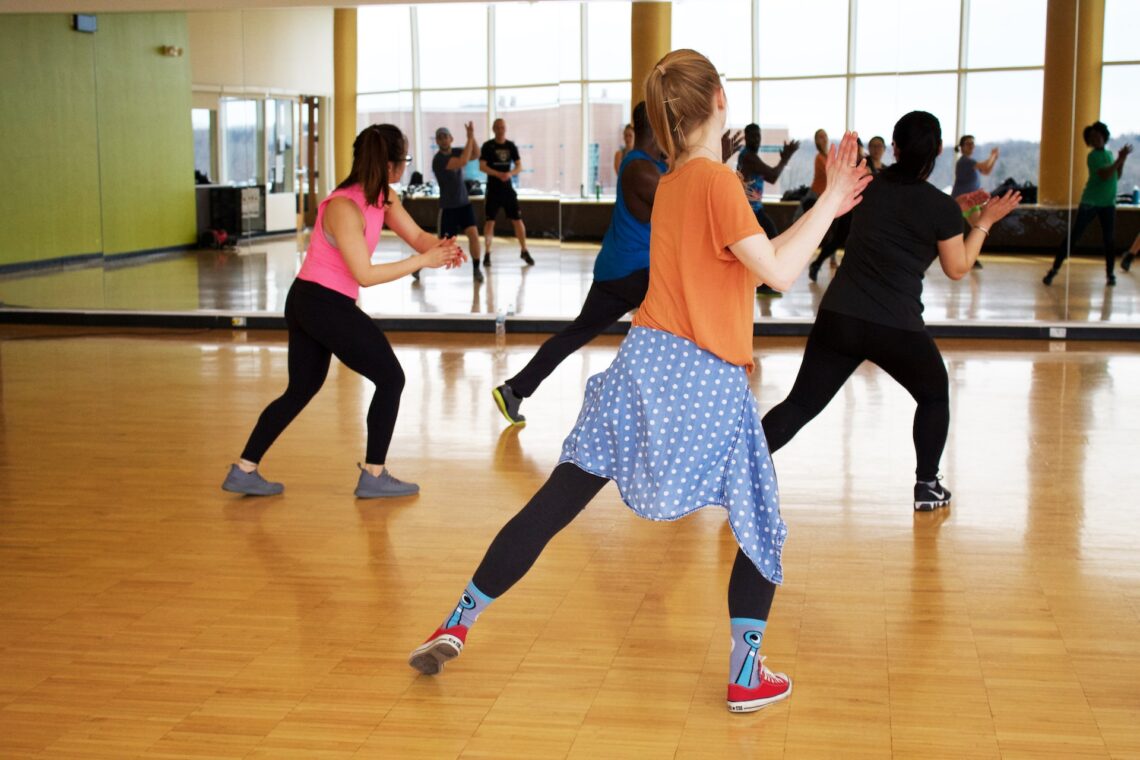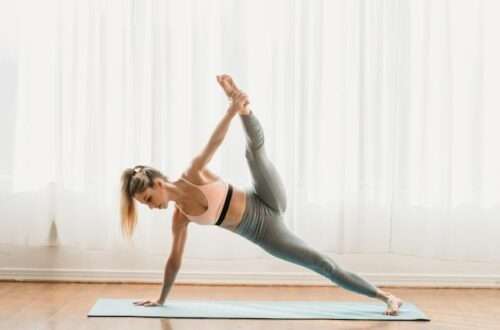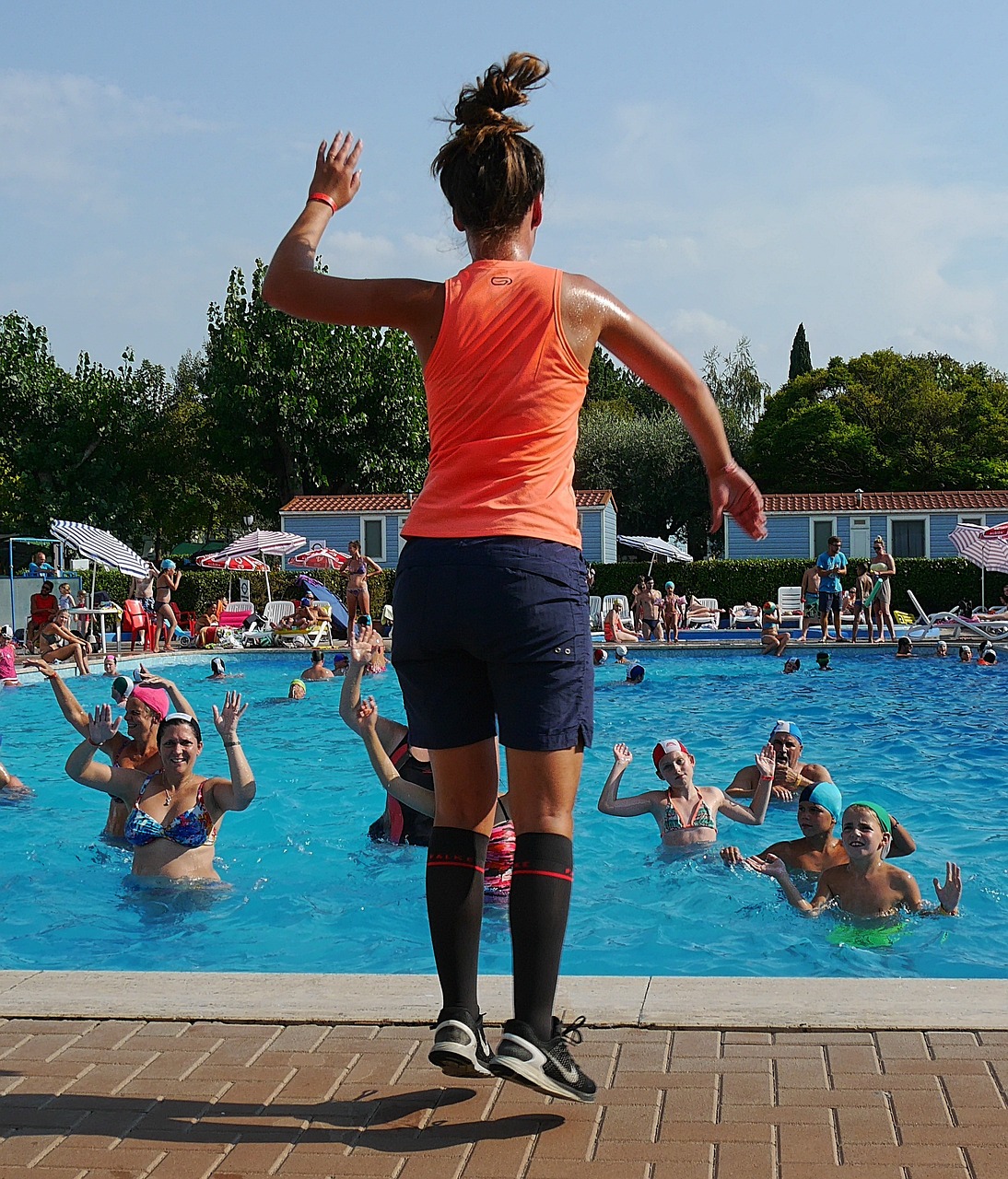
Aerobics: The Fun, Effective, and Affordable Way to Get in Shape
In the quest for a healthy lifestyle, finding the right exercise routine that suits your needs can be a challenge. One form of exercise that continues to gain popularity is Aerobics.
Offering a range of benefits, aerobics is not only fun and effective but also affordable. It’s a type of physical exercise that involves rhythmic movements and the use of large muscle groups to increase the heart rate and improve cardiovascular health.
Whether you’re looking to lose weight, improve heart health, boost stamina, or enhance your overall well-being, incorporating aerobics into your fitness routine can have a positive impact on your health.
In this article, we will explore the world of aerobics and discover why it is an excellent way to get in shape.
Understanding Of Aerobics
Aerobics is a form of physical exercise that focuses on cardiovascular conditioning. It involves rhythmic and repetitive movements, typically accompanied by music, to increase heart rate and breathing for an extended period.
The word “aerobics” is derived from the term “aerobic,” which refers to the presence of oxygen. During aerobic exercise, the body utilizes oxygen to produce energy for the muscles.
Aerobics workouts typically involve continuous and moderate-to-high-intensity movements that engage large muscle groups, such as the legs, arms, and core.
The Health Benefits of Aerobics
Aerobics, a form of exercise that combines rhythmic movements with cardiovascular conditioning, offers a wide range of health benefits. Let’s explore some of the key health benefits of aerobics:
a. Cardiovascular Health:
Aerobics is renowned for its ability to improve cardiovascular health. By engaging in continuous, high-energy movements, aerobics increases your heart rate and strengthens your heart muscle.
Regular aerobic exercise promotes better blood circulation, lowers blood pressure, and reduces the risk of cardiovascular diseases such as heart attacks, strokes, and coronary artery disease.
b. Weight Loss and Maintenance:
Aerobics is an effective way to burn calories and contribute to weight loss. The high-intensity nature of aerobic workouts helps you burn a significant number of calories during each session.
Moreover, aerobic exercise elevates your metabolic rate, allowing you to continue burning calories even after you’ve finished exercising. By incorporating aerobics into your routine, you can achieve your weight loss goals and maintain a healthy body weight.
c. Improved Respiratory Function:
Engaging in aerobics increases your breathing rate, expands your lung capacity, and improves respiratory function. As your body demands more oxygen during aerobic exercise, your lungs become more efficient at oxygen exchange.
Over time, this can lead to improved breathing efficiency, making everyday activities feel less strenuous and reducing shortness of breath during physical exertion.
d. Enhanced Stamina and Endurance:
Aerobics is a fantastic way to boost your stamina and endurance levels. The repetitive movements and sustained activity in aerobic exercises train your body to deliver oxygen more efficiently to your muscles.
This improved oxygen delivery allows you to engage in physical activities for longer durations without fatigue. Whether you’re participating in sports, hiking, or simply going about your daily tasks, increased stamina and endurance from aerobics can greatly enhance your performance and overall energy levels.
e. Muscle Toning and Flexibility:
Aerobics involves a variety of movements that engage multiple muscle groups simultaneously. As you perform these exercises, you can develop lean muscle mass and improve overall muscle tone.
Aerobics also promotes a better range of motion, flexibility, and a lower risk of muscle strains and injuries thanks to its dynamic movements.
f. Mental Well-being:
Regular participation in aerobics has been shown to have significant mental health benefits. Aerobic exercise stimulates the release of endorphins, which are natural mood-boosting chemicals in the brain.
These endorphins help reduce stress, alleviate symptoms of anxiety and depression, and improve overall mental well-being. Aerobics also provides a social element, especially when participating in group classes, allowing for social interaction and a sense of community.
g. Lowered Risk of Chronic Conditions:
Engaging in regular aerobic exercise can reduce the risk of various chronic conditions. By managing weight, improving cardiovascular health, and enhancing overall fitness, aerobics helps lower the risk of conditions such as type 2 diabetes, high blood pressure, osteoporosis, and certain types of cancer.
It also improves insulin sensitivity, which is beneficial for individuals with diabetes or at risk of developing the disease.
h. Affordability and Accessibility:
One of the significant advantages of aerobics is its affordability and accessibility. Unlike expensive gym memberships or specialized equipment, aerobics can be performed in the comfort of your own home or in community centers with minimal or no equipment requirements.
There are countless online resources, tutorials, and videos available, making it easier than ever to get started with aerobics at any fitness level.
Forms Of Aerobics
There are various styles and formats of aerobics, including:
a. Low-Impact Aerobics:
These workouts involve movements that keep at least one foot in contact with the ground at all times, reducing the impact on joints. Low-impact aerobics is suitable for individuals with joint issues or those who prefer less intense movements.
b. High-Impact Aerobics:
In contrast to low-impact aerobics, high-impact aerobics includes movements where both feet leave the ground simultaneously. It typically involves jumps, hops, and vigorous movements, providing a higher level of intensity and impact.
c. Dance Aerobics:
Dance-inspired aerobics combines aerobic exercise with dance moves, incorporating elements from various dance styles like hip-hop, salsa, or jazz. These workouts focus on coordination, rhythm, and choreographed routines to make exercise enjoyable and entertaining.
d. Step Aerobics:
Step aerobics involves performing movements on and off an elevated platform called a step. It incorporates stepping up, down, and around the platform, combining cardiovascular exercise with lower-body strength training.
e. Water Aerobics:
Water aerobics takes place in a pool and uses the water’s resistance to provide a low-impact yet effective workout. It is gentle on the joints while still offering resistance for strength and cardiovascular training.
How to Get Started with Aerobics
a. Setting goals:
Start by determining your fitness goals. Do you want to improve cardiovascular health, lose weight, increase stamina, or simply have fun while exercising? Setting clear goals will help you stay motivated and track your progress.
b. Choosing an aerobics style:
There are various types of aerobics, such as step aerobics, dance aerobics, water aerobics, kickboxing, and more.
Consider your interests, fitness level, and any physical limitations when choosing a style that suits you. Experiment with different styles to find what you enjoy the most.
c. Finding resources and classes:
Look for resources and classes in your local community. Gyms, fitness centers, and community centers often offer aerobics classes. You can also explore online platforms or video tutorials that provide aerobics routines.
Joining a class or having access to instructional videos can provide guidance, motivation, and an opportunity to learn proper form.
d. Creating a schedule:
Determine how often you want to engage in aerobics. According to the American Heart Association, you should strive to complete at least 150 minutes of moderate-intensity aerobic activity or 75 minutes of vigorous-intensity aerobic activity each week.
Plan your aerobics sessions throughout the week, ensuring you have enough time for recovery between workouts.
e. Safety precautions and warm-up/cool-down routines:
Prioritize safety by incorporating warm-up and cool-down routines into your aerobics sessions. A warm-up prepares your body for exercise by increasing blood flow, loosening muscles, and raising your body temperature.
It can include light cardio exercises and stretching. After your workout, cool down with gentle stretches to gradually lower your heart rate and prevent muscle soreness.
Remember to take the following precautions during aerobics:
Start gradually: If you’re new to aerobics or haven’t exercised for a while, begin with low-impact exercises and gradually increase intensity and duration.
Listen to your body: Pay attention to how you feel during the workout. If you experience pain, dizziness, or shortness of breath, stop exercising and consult a healthcare professional if necessary.
Wear appropriate footwear: Choose supportive and comfortable athletic shoes that provide proper cushioning and stability.
Stay hydrated: Drink water before, during, and after your workout to prevent dehydration.
Modify exercises if needed: If you have any physical limitations or injuries, adapt the exercises to suit your needs. Consult a fitness professional or physical therapist for guidance if necessary.
How To Make Aerobics Fun
Making aerobics fun is crucial for maintaining motivation and consistency. Here are some ways to make your aerobics workouts enjoyable:
a. Trying different aerobics styles:
Experiment with various aerobics styles to keep things exciting. Explore dance-based aerobics like Zumba, hip-hop aerobics, or even martial arts-inspired workouts. Switching up the styles can challenge your body in new ways and prevent boredom.
b. Engaging in group classes or workouts with friends:
Joining group classes or working out with friends can add a social element to your aerobics routine. Exercising with others creates a supportive and energetic environment, making the workout more enjoyable. You can motivate each other, have fun, and share the experience together.
c. Incorporating music and personal preferences:
Music can greatly enhance your aerobics experience. Create playlists of upbeat and motivational songs that energize you. Choose songs that you love and that match the tempo of your workout. Dancing or exercising to your favorite tunes can make the session feel more like a party than a workout.
d. Setting rewards and staying motivated:
Create a reward system for yourself to stay motivated. Set milestones or goals, and when you achieve them, treat yourself to something you enjoy, like a new workout outfit, a massage, or a day off. Rewards can help you stay focused and provide an extra incentive to keep going.
Here are a few more ideas to make aerobics more enjoyable:
Get creative with your workouts: Add variety to your routine by incorporating fun elements like dance moves, props, or interval training. You can also try outdoor aerobics in parks or other scenic locations.
Track your progress: Keep a record of your achievements, such as increasing the duration or intensity of your workouts. Seeing your progress can be motivating and help you stay committed.
Join fitness challenges: Participate in fitness challenges or programs that align with your goals. These challenges can provide structure, accountability, and a sense of competition if that motivates you.
Celebrate small wins: Acknowledge and celebrate your achievements, no matter how small. It could be completing a challenging workout, improving your form, or increasing your endurance. Celebrating your progress reinforces a positive mindset and keeps you engaged.
Conclusion
Aerobics is a versatile and effective form of exercise that offers numerous health benefits. From improving cardiovascular health and weight management to enhancing stamina, muscle tone, and mental well-being, aerobics provides a holistic approach to maintaining a healthy lifestyle.
Remember, finding joy in your aerobics routine will make it easier to stick with it in the long run. Listen to your body, have fun, and embrace the journey towards a healthier and more active lifestyle.
So why not give it a try and start reaping the benefits of this fantastic form of exercise today.


You May Also Like

HIIT vs. Steady State Cardio: Which is Better?
27 July 2023
Boost Your Weight Loss with a Quick and Effective 15-Minute Cardio Workout
13 October 2024
